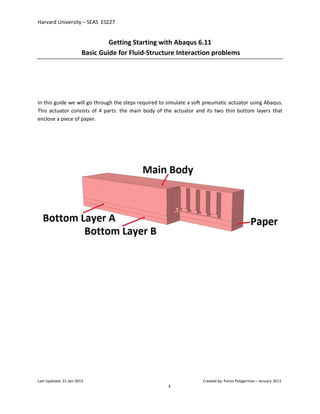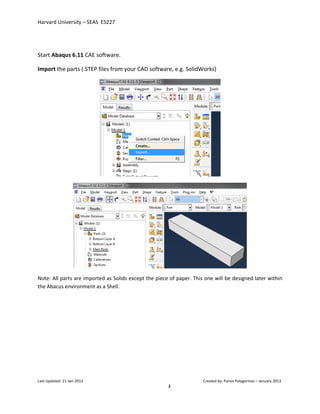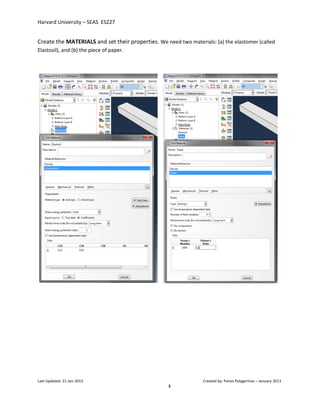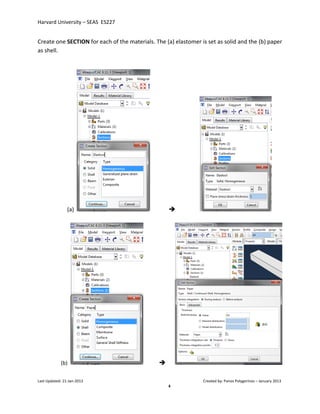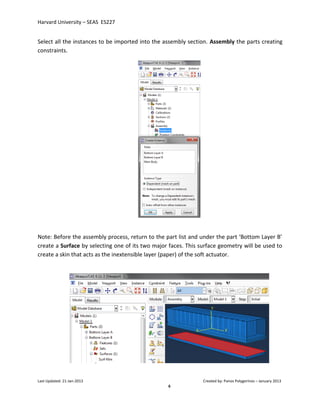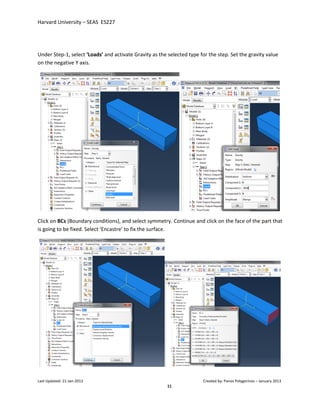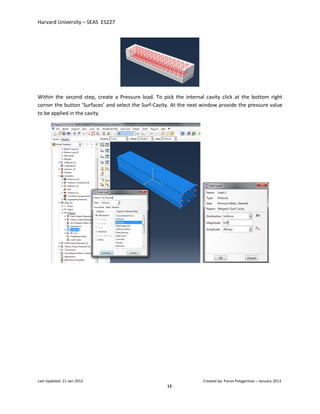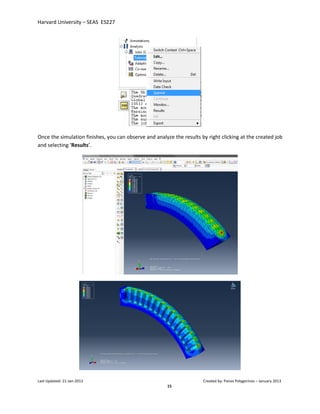This document provides step-by-step instructions for simulating a soft pneumatic actuator using Abaqus. It describes:
1) Importing actuator part files and designing a piece of paper part within Abaqus.
2) Creating materials, sections, and assigning them to parts.
3) Assembling parts and creating a skin to represent the paper.
4) Meshing and applying boundary conditions like gravity and pressure loads.
5) Submitting the job and viewing results.
